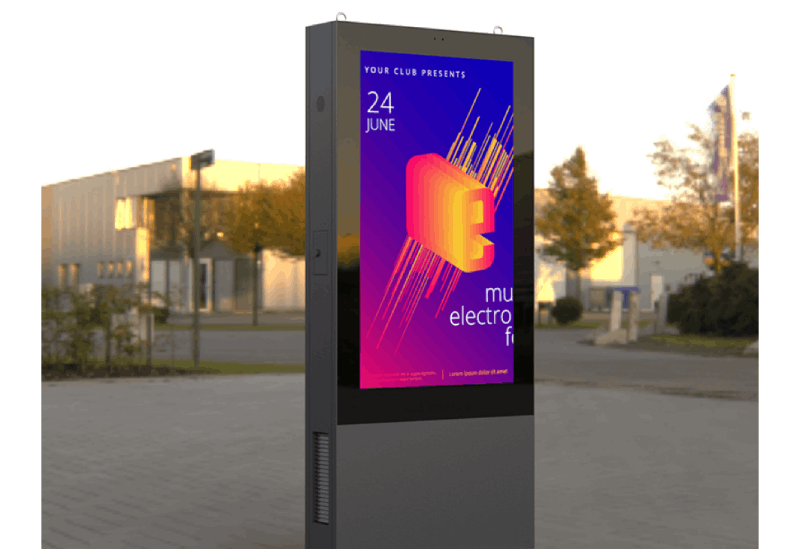A kiosk survey: what is it? Ever consider the number of individuals that like using the public survey kiosks to do their questionnaires? Interestingly, a sizable portion does!
And as more companies learn that it’s a fantastic method to get prompt, honest feedback, this number is rising.
(Side note: Did you know that respondents to kiosk surveys are often more truthful? It’s true that they allow companies to see directly into consumers’ minds.)
There’s a question floating about, however, whether you’re shopping or sipping your coffee: What’s the issue with those inconspicuous kiosk polls, and why should we care? We’ll talk about it everything.
Kiosk software design works on building robust functionality and user-friendly interfaces to help organizations provide interactive successful self-service solutions.
A kiosk survey: what is it?
Have you ever seen a touch screen asking for your feedback at a shop or mall? A kiosk survey, that is! It’s a fast and simple method for companies to comprehend what clients are thinking.
I just discovered something interesting when purchasing athletic sneakers at Decathlon. A touch screen immediately prompted me to review my shopping experience while I was waiting for my bill. Astute, huh? It provided me with something engaging to do while I waited, making it less tedious. That’s a great way to receive feedback and a really smart use of time!
The situation is as follows:
Feedback on the Spot: Consider sharing your opinions immediately after an encounter. Instant feedback is what a kiosk survey enables.
Fundamental Versatility: Kiosk surveys are adaptable to various requirements. Businesses may personalize it with a basic rating system or with in-depth inquiry types.
Dynamic Customer Insights: These questionnaires act as a real-time picture of the attitudes of the respondents. It’s an instantaneous response, not a delayed one.
Touch Screen Interaction: The configuration is easy to use. Customers may easily and hassle-free offer their comments via a touch screen.
In summary, a kiosk survey functions similarly to a fast chat window for consumers and businesses, providing them with access to your opinions at the precise moment they matter.
Kiosk Survey Types
The frequency at which kiosk surveys are utilized might vary according on the touchpoints that a brand want to address. Here are some that you may find useful:
1. Surveys that are Transactional
They are akin to the reporters covering the aftermath.
Transactional surveys are designed to record your current experience and appear after you make a purchase or utilize a service.
Let’s take an example where you purchase a new pair of shoes. A transactional survey is sent to you after the sale with the question, “How satisfied are you with your shoe-shopping experience?”
Businesses may quickly assimilate your emotions and implement modifications as needed.
iPad kiosk software gives regular iPads the capability to function as robust kiosks for self-service, giving business entities flexible and engaging customer interaction tools.
2. Surveys of customer satisfaction (CSAT)
It resembles a happiness survey. CSAT surveys gauge your overall level of satisfaction with a product or service.
A CSAT survey may inquire, “On a scale of 1 to 5, how satisfied are you with your shopping experience?” after an online purchase.
It’s a numerical snapshot that enables companies or brands to monitor trends in customer satisfaction and pinpoint areas in need of improvement.
3. Kiosks for employee feedback
Companies care about the well-being of their employees. Kiosks for employee feedback measure engagement and satisfaction.
Workers may come across a kiosk at the conclusion of the workday that asks, “How was your day at work?”
This goes beyond simple protocol. Businesses may use it as a tool to better understand the feelings of their employees, which enhances productivity and raises job satisfaction levels.
4. Surveys for Event Feedback
Have you attended any event including a feedback station? These self-serve kiosks record your likes and dislikes.
“Did you enjoy the show?” a kiosk asks as you leave an event. Event feedback kiosks provide organizers with important information on what went well and what needs improvement. It’s an essential tool for improving the event experience over time.
To get feedback, you may utilize a data gathering tool. in particular, the kiosk and offline surveys! All you have to do is link your kiosk gadget to the platform and start taking surveys. The kiosk survey responses are kept in your account when someone answers them.
The Value of a Survey Kiosk
So why are these feedback stations with touch screens so ubiquitous?
Quick Responses: Kiosk surveys provide companies with very fast responses. It resembles a momentary representation of what clients are thinking at the time of an experience.
Make Customers Happier: Instant problem solving has the potential to increase customer satisfaction and retention thanks to kiosk surveys. Wouldn’t it be nice to get your issues resolved right away?
Time Is Crucial: Right now, kiosk surveys are being conducted. Not having to wait. This indicates that the criticism is current and precise.
Sincere Views: When completing kiosk surveys, people are often more truthful. Like having a private conversation, the feedback is sincere.
Suitability for Any Need: Kiosk surveys are adaptable to many circumstances. They are adaptable, much like chameleons in the feedback world!
Just the facts, no mistakes: Direct responses from customers result in fewer data errors. It’s factual information that helps firms make wise choices.
How to Configure a Survey Kiosk
The procedure is simple. I’ve attempted to simplify it into an eight-step manual. You may now proceed.
#1 Determine Crucial Touchpoints:
Determine the areas closest to the checkout, service desks, or entrances where your customers tend to interact the most. These are the areas where you may get the greatest input from your kiosk survey.
#2 Select the Appropriate Questions:
Make your queries interesting and concise. Select those that fit your objectives. A café may inquire, “How was your coffee today?” for example. Make it simple for clients to swiftly voice their opinions.
#3 Placement Strategically:
It matters where you place your kiosk. Therefore, make sure it enhances rather than detracts from the client experience. More involvement is guaranteed with a strategically located kiosk.
#4 Think About Visual Cues
Use illustrations and concise directions to help your consumers. A simple happy face or sign that says, “Share your thoughts here,” might go a long way toward boosting engagement.
#5 Pick an Easy-to-Use Platform:
Select a platform that makes things easier. Kiosk surveys are simple to produce. To make your experience more efficient, look for anything user-friendly.
#6 Options for Integration:
Select a platform that works seamlessly with the systems you already have in place. The management and analysis of the input is facilitated by this. A feedback procedure that is more efficient is ensured by seamless integration.
#7 Evaluate and Adjust:
Test your kiosk survey before it goes live. Make sure it flows properly by going through it as a client would. Adjust any unclear passages or questions that need clarification.
#8: Let it Happen:
When everything seems to be in order, it’s time to start your kiosk survey. Keep an eye on the comments and be prepared to make any further changes in light of the answers.
Survey Kiosk: Goods and Bads
Don’ts
Keep It Simple: Write clear, concise questions. Simpler inquiries provide more insightful answers.
Select Strategic Locations: Position kiosks where people are likely to stop. That guarantees more people will complete the survey.
Clear Instructions: Direct users using signs and pictures. Less misunderstanding results from clear directions.
Test Before Launching: Give the kiosk survey applications a try. It assists in identifying any problems before to users.
Avoids:
Don’t Ask Too Many: Make your question brief. Asking too many inquiries might drive others away.
Don’t Break the Flow: Position kiosks such that they don’t interfere with customers’ experiences. Make it a smooth, integrated aspect of their trip.
Avoid Jargon and speak in simple terms. Steer clear of jargon that might mislead readers.
Don’t Ignore Customer Feedback: Pay attention to what they have to say if they suggest a repair. Ignoring criticism results in lost chances to become better.
A Survey Example from a Feedback Kiosk
Let’s go into the coffee industry and see how Starbucks utilizes feedback kiosk surveys to its advantage:
The Configuration
After grabbing your coffee from Starbucks, there’s a modest kiosk next to the exit. It’s a little touch screen that asks you silently what you think.
The best self-ordering kiosk system expands user satisfaction and productivity by speeding relations with clients with its simple interfaces and quick execution of orders.
The queries
Surveys taken at Starbucks kiosks include a wide range of topics, including the atmosphere, service, and coffee flavor. Easy questions designed to elicit prompt answers.
The Situation:
While enjoying your preferred Starbucks beverage, picture a polite survey appearing in front of you. It’s only a brief opportunity for you to express your ideas; it’s not invasive.
The Effect
Through the gathering of real-time input, the brand improves its products. Your feedback is valued, and the kiosk survey guarantees that consumers’ favorite foods are consistently served.
The Reason It Works
Starbucks makes deliberate use of these touch-screen questionnaires. It’s about improving the experience rather than inundating consumers. A brief questionnaire seamlessly integrates into the daily coffee ritual without interfering.
Remember that Starbucks offers more than simply a delicious cup of coffee the next time you consume one. A deliberate feedback mechanism is also in the works.
There you have it, then. These inconspicuous kiso surveys are crucial for gathering real-time information and increasing client happiness. At Linkitsoft, Kiosk surveys enhance consumer experience whether they are purchasing sports equipment at Decathlon or enjoying a cup of coffee at Starbucks.







Leave a Reply